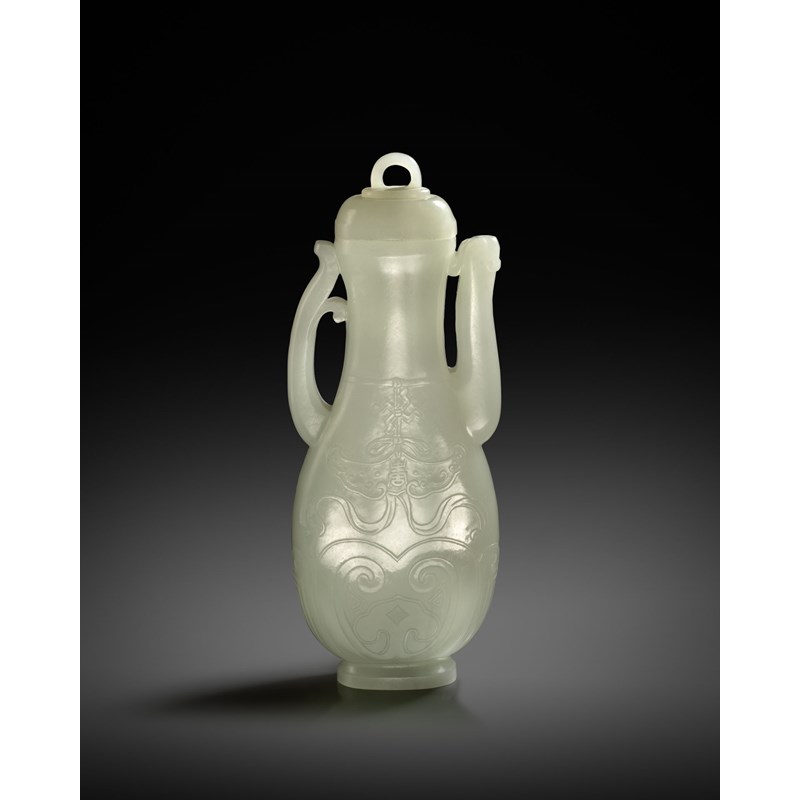The Lawrence Jade Collection - 14 Nov 2023
A FINE CHINESE PALE CELADON JADE PEAR-SHAPED EWER AND COVER, ZHIHU
A FINE CHINESE PALE CELADON JADE PEAR-SHAPED EWER AND COVER, ZHIHU
QIANLONG 1736-95
The flattened body rising to a waisted neck and upright rim, worked in low relief to each principal side with a fylfot and a qing tied with flowing ribbons, the archaic chime decorated with simple scrolls and a shou character, with large ruyi motifs below the design, the body set with a curved handle formed as a split branch and a slender spout terminating in an animal mask, with a simple loop knop to the top of the domed cover, the pale stone with a russet and cloudy white marking to one side, 18.4cm. (2)
Provenance: the Lawrence Collection of jades and hardstone carvings, purchased from Roger Keverne Limited on 25th June 2007. A copy of the invoice is available.
Published: R Keverne, Jade, p.170, fig.106; and also R Keverne, Summer Exhibition 2007, p.126, no.110.
The fylfot is a sacred symbol in many religions; in China it is usually associated with Buddhism, and is one of the 65 auspicious signs on the footprint of Buddha. It is also regarded as the impression of the Buddha, and is often seen on the chest of Sakyamuni Buddha. The name swastika is derived from Sanskrit, meaning 'so be it'. The Chinese, however, read it as the character 'wan' ten thousand, which is descended from heaven. In popular belief, it represents auspiciousness. The symbolism in the decoration of this ewer suggests that it was probably made as a birthday present for an important member of the Imperial Palace.
Cf. R Kleiner, Chinese Jades from the Collection of Alan and Simone Hartman, pp.58-59, no.52 for a related ewer; see also Zhongguo Yuqi Quanji, vol.6, pp.2-3, nos.2 and 3 for further ewers in the collection of the Palace Museum.
清乾隆 青白玉雕萬壽吉慶執壺
來源:勞倫斯珍藏玉石,2007年6月25日Roger Keverne古董店(附發票複印件)。
出版:R Keverne, Jade, 頁170, 圖.106; and also R Keverne, Summer Exhibition 2007, 頁.126, 編號.110。




 Live online bidding is available via our own
Live online bidding is available via our own